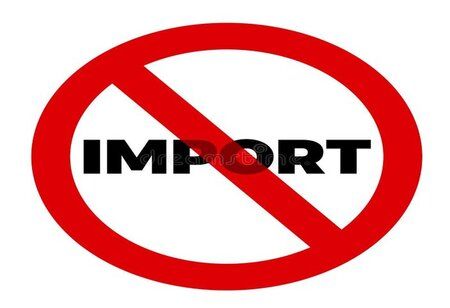
As a result of a significant push for domestic manufacture, India would no longer import urea by the end of 2025, according to Chemicals and Fertilizers Minister Mansukh Mandaviya. The minister stated that fertilizer supply is critical to Indian agriculture in a conversation with PTI.
According to him, chemical fertilizers have been used in the nation for the past 60–65 years in an effort to increase agricultural yield.
The government is currently working to promote alternative fertilizers like nano liquid urea and nano liquid di-ammonium phosphate (DAP), according to Mandaviya.
"Using different fertilizers improves the health of the soil and crops. We're pushing it," he declared.
When asked how the Modi administration intends to eliminate urea import reliance, Mandaviya said that there are two strategies in place to achieve self-sufficiency in urea manufacturing.
The minister emphasized that in addition to restarting one facility, the government has brought four shuttered urea factories back to life.
He mentioned that the country of India need about 350 lakh tons of urea every year to suit its own demands.
According to Mandaviya, installed domestic production capacity have grown from 225 lakh tonne in 2014–15 to over 310 lakh tonne.
"At present, the gap between annual domestic production and demand is around 40 lakh tonne," stated the minister.
After the fifth plant is put into service, Mandaviya predicted that the country's urea production capacity will reach about 325 lakh tonnes annually. The goal is to replace the 20–25 lakh tonnes of traditional urea with nano liquid urea.
"We have a very clear agenda. "Modiji will eliminate the nation's urea import reliance by the end of 2025," he declared, adding that urea import costs will drop to zero.
The government reports that urea imports decreased from 91.36 lakh tonne to 75.8 lakh tonne in 2022–2023.
In 2020–21, 91.23 lakh tons were imported; in 2019–20, 74.81 lakh tons were imported; and in 2018–19, 98.28 lakh tons were imported.
Mandaviya emphasized that throughout the past ten years, the Modi administration has made sure that the agriculture industry has a sufficient supply of fertilizers.
The 'PM Programme for Restoration, Awareness, Nourishment and Amelioration of Mother Earth' (PM-PRANAM) initiative was also introduced by the government to encourage states and Union Territories (UTs) to use chemical fertilizers sparingly and to encourage the use of alternative fertilizers.
A legally specified Maximum Retail Price (MRP) is paid to farmers who receive urea under the Urea Subsidy Scheme (USS). Manufacturers receive payment for the difference between the manufacturing cost and the MRP of urea.
Additionally, the Nutrient Based Subsidy Policy guarantees farmers have access to P&K (phosphatic and potassic) fertilizers at fair costs by notifying them of a certain amount of subsidy on a yearly or semi-annual basis.
Imports of urea go through a government account.
Nonetheless, the Nutrient Based Subsidy (NBS) Scheme covers all P&K fertilizers (DAP, MOP, and NPK) under an Open General License (OGL), and the fertilizer businesses import them on conditions that are profitable for them.

